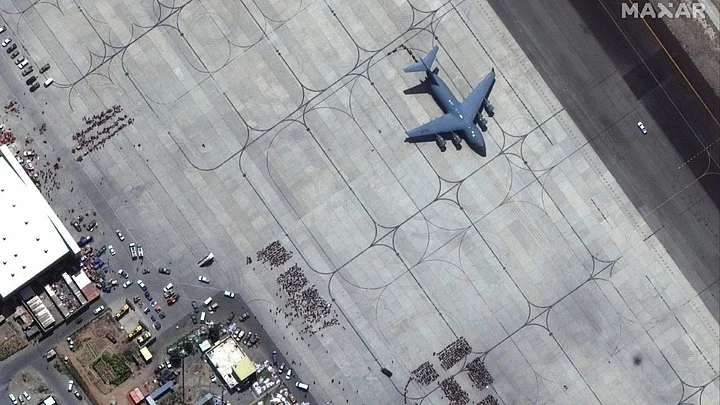As Taliban's return to power in Afghanistan completes one year, the government on Monday, 15 August, conferred the Vayu Sena Medal for Gallantry to Group Captains Rahul Singh and Ravi Nanda for their roles in Operation Devi Shakti last year to bring back Indians from Kabul, Afghanistan.
Amid the withdrawal of United States' troops from the war-torn country, the Indian Air Force (IAF) officers landed C-17 and C-130 transport planes in Kabul in different missions despite multiple threats.
How did the IAF officers execute the mission? What problems did they face during the mission? Here’s what we know.
How the Events Unfolded
As per the Ministry of Defence, “On 20 August 2021, as a part of Operation Devi Shakti, Ravi Nanda was tasked for a special operation into the destabilised war-torn nation of Afghanistan. The officer was the commander of a mission to fly into the epicentre of the conflict zone of Kabul to insert a ‘Specialised Government Team’ for facilitating the swift evacuation of the Indian diaspora under imminent threat to their lives. The officer planned an efficient tactical departure in dark night and also safely evacuated 87 Indians to Dushanbe,” news agency ANI reported.
Meanwhile, Group Captain Rahul Singh was detailed as the overall mission commander of the three C-17 aircraft tasked for the evacuation of the Indian Embassy staff and diaspora from Kabul as the Taliban tookover the country.
“The flight landed at Kabul airport at night and taxied to the spot vacated by the preceding C-17 aircraft. After holding on the ground for nearly four hours, the possibility of the remaining evacuees reaching the airport still remained bleak,” the ministry added.
Gunfire and Night Vision Goggles
However, the situation grew hostile with intensifying gunfire and civilians running towards the aircarft, after breaking through the southern perimeter wall.
The ministry said that the officer displayed "superior judgement and dynamic decision-making" and quickly departed for Dushanbe to prevent any harm to the aircraft.
Later, close to midnight, the officer took off for Kabul for a possible blind landing using Night Vision Goggles (NVGs).
“Short of Kabul Airport, the flight had to hold for close to an hour (burning precious fuel) near Durand line as communication could not be established with the now evacuated ATC tower and Radar Approach services,” the ministry stated.
The officer then contacted the USAF Airborne Control and obtained an accurate update of the ground situation.
“At the same time, he was also coordinating via SATCOM with the Air Attache on the ground. After frantic negotiations, the aircraft was finally cleared for landing at its own risk," the ministry said.
"Post parking, the officer established contact with the US Ground Force commander and directed the GARUD forces to establish a defensive perimeter around the aircraft. Post a four-hour delayed arrival of the 153 evacuees; the officer promptly taxied out and executed a flawless tactical departure in order to avoid ground fire in the absence of any ground navigation aids,” the ministry added.
(With inputs from ANI.)
